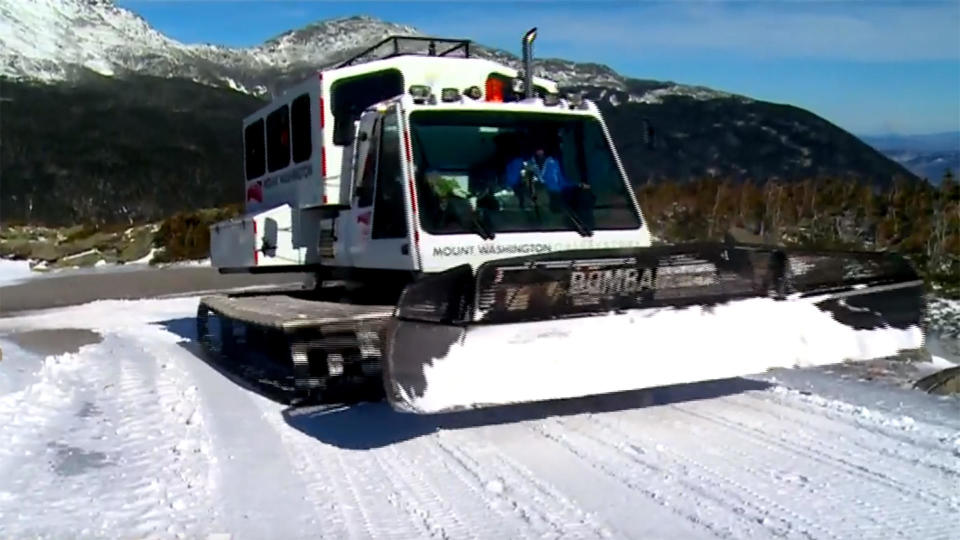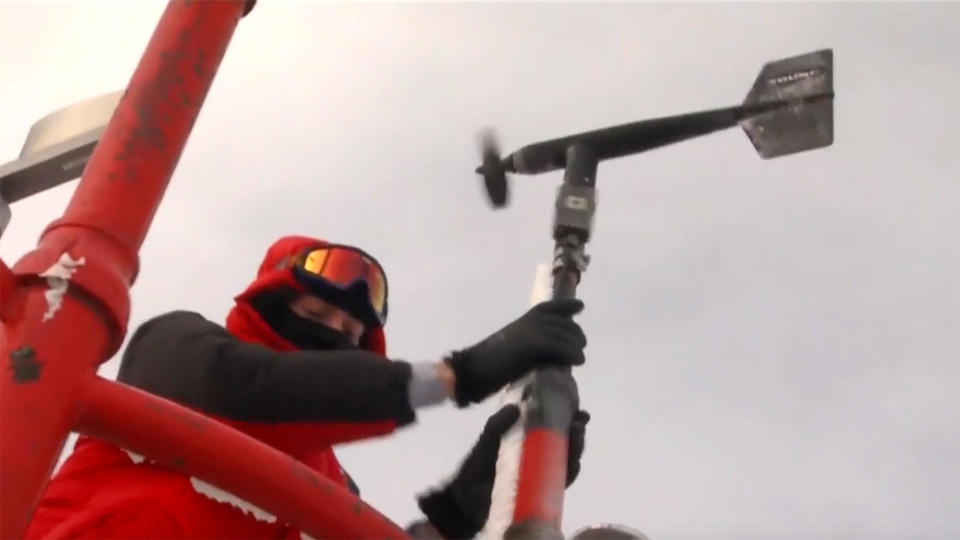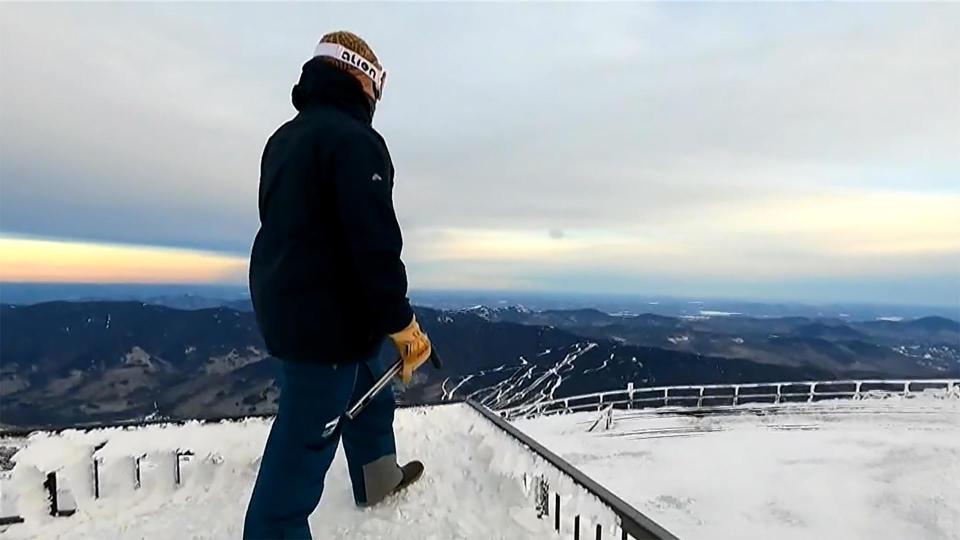How researchers track weather on Mt. Washington in extreme conditions
New England's highest peak, Mount Washington in New Hampshire, is home to what's been called "the world's worst weather." In February, the wind chill at Mount Washington plunged to a record 109 degrees below zero — what researchers say could be the lowest recorded wind chill temperature in U.S. history.
Mount Washington's latitude, height and atmosphere make it uniquely prone to extreme weather, which is why observers there collect measurements day and night, 365 days a year.
"There definitely are other places on the planet that experience weather like this, but no one's there," said Jay Broccolo, director of weather operations for Mount Washington Observatory, a nonprofit dedicated to understanding weather and climate.

He said researchers feel like they are experiencing weather history.
Teams of researchers rotate shifts, spending a week at the summit's observatory. Researchers head out every hour on the hour to track temperature and humidity.
Proper attire is critical.
"Most of the time you're in a cold environment when you're working up here and going outside for an extended period of time, you have exposure risks, you have frostbite, and you have hypothermia," said weather observer Hayden Pearson.
Pearson explained that when he goes outside, he takes a sling psychrometer, which has two thermometers and is stored in a heated box. Despite advances in technology, it's the same instrument they've been using for 90 years to ensure consistency and accuracy in their recordkeeping.

Through rain, shine and plenty of snow, observers keep track of it all – including the fastest windspeed recorded by a human on land, at 231 miles per hour back in 1934.
Observers also record wind speed on instruments that feed to the National Weather Service.
All the information they collect and immediately log helps shape forecasts nationwide, and builds on the work of previous generations.

From the highest point on the mountain, visitors can see five states, two countries and the ocean. "Not too bad for an office view!" said Pearson.
As a snowstorm blanketed the area, Pearson collected measurements as visibility dropped to about zero.
"It's kind of like storm chasing, but instead of chasing it, we wait for it to come to us," he said.

The observatory maintains what is now one of North America's longest continuous climate records. And while there are other stations that collect data, they operate without people.
"A lot of times they'll take that data and just assume it's right, because the instrumentation said that's what it is," said Broccolo.
Live webcams from Mount Washington Observatory
Accurate research matters in understanding climate change.
"Climate is made up of daily weather patterns. And those daily weather patterns slowly, slowly change over time," Broccolo said. "And that's what makes up our climate. And here we get to see it. We get to live in it, and we get to see what happens after the fact."
"Normally, to get that type of data, you need to launch a weather balloon. And weather balloons are expensive. They also pollute," said Broccolo.
"We've noted slight increases in temperature up on the summit. We've seen shorter snow seasons. The melting out of snow is occurring a little bit earlier. And how we grow food for people, how we supply water, how we clean water, it all matters. It all ends up back to weather patterns," Broccolo said.
Researchers and volunteers say that's what motivates them to staff the observatory around the clock. They sleep, cook and eat together, before unwinding at the end of the day. A cat named Nimbus keeps everyone company and video games help pass the long hours on the mountain.
Ultimately, up in the clouds, Broccolo says, the observatory is a family.
"Everyone's here to do the same purpose," he said. "They want to be a part of the history. There's so many hardy souls that have spent time of their life on the summit. And being part of that is really meaningful and fulfilling."
"We do feel very proud of what we do. And that goes a long way," he said.
"That sense of belonging to the weather or to what's happening around you makes you feel important. It makes you feel like loved by nature," he added.

Officials give update on mass shooting in Louisville, Kentucky
Senate chaplain calls for Congress to act on guns
"60 Minutes" gets an inside look at the reconstruction of Paris' Cathedral of Notre Dame

